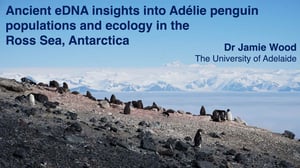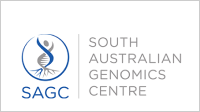Post-Event Summary: Beyond Detection – The Future of eDNA Research
The SAGC and the Flinders Accelerator for Microbiome Exploration (FAME) were proud to host the seminar "Beyond Detection: The Future of eDNA Research" on Wednesday, March 26, at Flinders' City Campus. This event brought together leading researchers and experts to explore the latest advancements and future directions of environmental DNA (eDNA) technology.
Dr. Elise Furlan delivered an insightful keynote address, reflecting on the evolution of eDNA applications and its expanding role in ecological monitoring. She highlighted cutting-edge developments, including the potential for eDNA analysis to extend beyond species detection into areas such as population genetics, eRNA studies, and species abundance estimation. Her presentation underscored how these emerging methodologies could revolutionise conservation and biodiversity management strategies.
Complementing the keynote, a panel of esteemed researchers shared their expertise:
• Dr. Vilma Pérez (The Australian Centre for Ancient DNA, University of Adelaide)
• Dr. Jamie Wood (The Australian Centre for Ancient DNA, University of Adelaide)
• Dr. Michael Doane (Flinders University, FAME)

Attendees gained valuable insights into the challenges and opportunities shaping the next decade of eDNA research. From refining detection methodologies to broadening its applications in ecological and conservation sciences, the seminar highlighted the transformative potential of this technology.
SAGC and FAME extend their gratitude to all speakers, attendees, and our sponsor, Illumina, for making this seminar a resounding success.

Dr. Jamie Wood is a terrestrial ecologist specialising in molecular ecology and palaeoecology, applying evolutionary and environmental genomics alongside complementary analyses (e.g., palynology, macrofossils, radiocarbon dating) to study ecosystem composition and function over the past 50,000 years. His research explores climate change, human impacts, species interactions, and the use of ancient environmental DNA (eDNA) for conservation. A key focus is pioneering the use of coprolites (ancient dung) to study extinct and threatened species through eDNA-based dietary and parasite analyses. His current projects include metagenomic studies of prehistoric Pacific rat coprolites in New Zealand and ancient Adélie penguin guano from Antarctica.
Key References:
- https://www.nature.com/articles/s41467-025-56925-4
- https://communities.springernature.com/posts/6-000-years-of-adelie-penguin-ecology-in-the-ross-sea-reconstructed-from-ancient-environmental-dna
- https://theconversation.com/dna-detectives-in-antarctica-probing-6-000-years-of-penguin-poo-for-clues-to-the-past-249940
Dr. Michael Doane (Flinders University, FAME)
Dr. Michael Doane is a Research Fellow at Flinders University's College of Science and Engineering. He earned his Bachelor of Science in Integrative Biology from the University of Illinois at Urbana-Champaign and completed a joint PhD in Ecology at the University of California, Davis, and San Diego State University, where he investigated host-microbe interactions in marine environments.
Michael’s research has focused on describing microbial community patterns from marine environments, including microbial communities from marine species, like sharks, and coral reef and kelp forest ecosystems. He has recently adapted his knowledge of genomic approaches to describe the distributions of vertebrate animals in both marine and terrestrial environments.

.jpg?width=300&name=eDNA%20Seminar%20(1).jpg)


